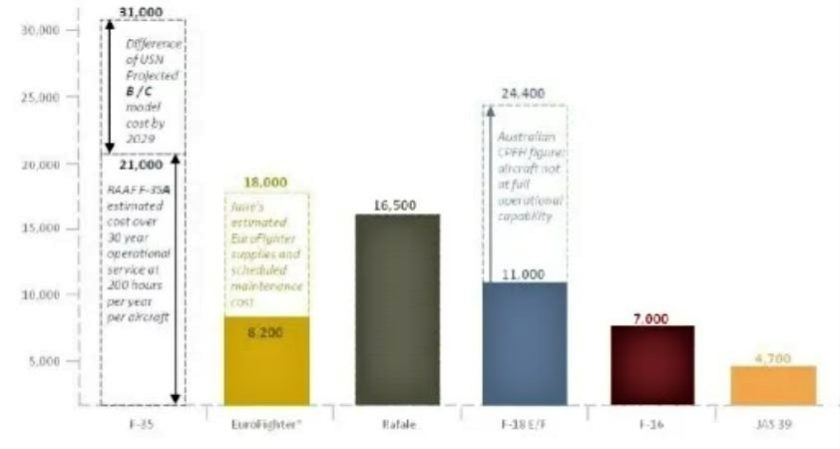AI, Infrastruktur
AI/ML Textbook Case for any IT-architect: Saab Gripen E

An architect can view a Gripen operating under strict radio silence as a huge “Edge device” with an onboard network of smaller Edge devices, in a skillful mix od Edge patterns. By using machine learning algorithms and making decisions locally at the Edge, Gripen achieves significant savings of energy, time, bandwidth and network footprint.
Fast local efficient data processing and decision-making at the edge take much less data transmission and minimize central processing. The architecture improves the total cost-benefit ratio (bang for the buck, so to speak).
Gripen pioneered a modular ”software first” architecture early on. Over time, its advanced Electronic Warfare System EWS turned out far more cost-efficient and upgradeable than stealth capabilities. According to Jane’s (see diagram), the Gripen has the lowest operational cost per flight hour (CPFH) when it comes to fuel usage, pre-flight preparation and repair, scheduled airfield-level maintenance, and associated personnel costs (whereas designing/fielding stealth aircraft comes at extreme costs plus expensive maintenance to keep it up and running.)

F-35 (bar in white) CPFH. Source: Jane’s review. Gripen (bar in amber)
Saab closely monitors Sweden’s needs and rolls-out continuous upgrades to meet the latest requirements. Gripen E’s architecture and functional partitioning in flight-/mission- functionality, simplify rapid upgrades for new capabilities as new threats arise and new technologies evolve. This will ensure Gripen E’s continuous operational relevance throughout its life span.
Substantial investment and foresight made Gripen E’s avionics architecture state of the art. It enables rapid insertion of new hardware and updated software for new missions: The computers can be swapped out quickly, to constantly increase processing power. Customer-specific software can be plugged in, to leverage new tech and systems, as threats evolve.
The Drive summed it up: “…offers a well-rounded array of higher-end capabilities in a relatively small, mature, and simpler package”.
Saab test pilot Marcus summed it up (video above): “The computational power of this aircraft allows for the use of today’s most demanding algorithms such as Deep Learning algorithms and the complex algorithms used for sensor fusion utilizing all the sensors we have in the aircraft and providing synergies from them”.
Business Insider summed it up: “The ”software first” approach has made upgrades easy and affordable compared to the rest of the market, where improvements are notoriously expensive. In particular, the Gripen E should remain an effective air defense platform for a very long time, notwithstanding improvements in stealth technology among Saab’s competitors”.
I summed it up in this blog last month: “A textbook case of the benefits of Edge computing for any IT architect.” In many sectors of industry. So, once again, whatever your tech, Keep Edging!

Reality, not a saga. The magic of Icelandic skies seen from a Saab Gripen. ©Milan Nykodým, Czech Air Force.
Related courses:
AI, Architecture, and Machine Learning
Agile Architechture Fundamentals
Avancerad objektmodellering med UML
(on demand: Modular Product Line Architecture )
Nyckelord: AI, Edge, it architecure, gripen